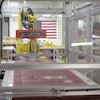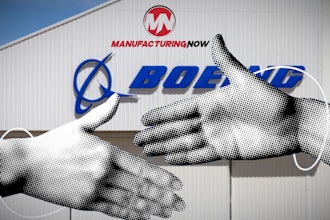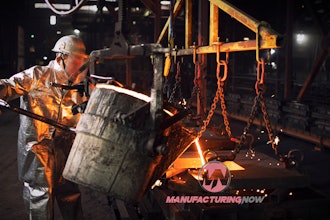By ANNA WELLS, Executive Editor, Industrial Maintenance & Plant Operation (IMPO)
 Everyone has a story about those few items in their lives they’ve retained for years and years that still function far better than the latest and greatest technology. I remember being a teenager, embarrassed by the giant, bulky microwave my parents kept in the kitchen. We’d had it for as long as I could remember and it took up a ton of space compared to the new models.
Everyone has a story about those few items in their lives they’ve retained for years and years that still function far better than the latest and greatest technology. I remember being a teenager, embarrassed by the giant, bulky microwave my parents kept in the kitchen. We’d had it for as long as I could remember and it took up a ton of space compared to the new models.
Instead of a digital popcorn button or a quick defrost, there was a giant ticking dial that required a hand crank to the right and some careful observation. My mom and dad didn’t feel the need to justify their bulky, antiquated food-heating device with more than: “It still works.” To their credit, when the microwave finally kicked the bucket, its slick-looking replacement only lasted about a year.
Now that I earn my own money and am responsible for my own small appliance purchases, I fully understand my parents’ logic in keeping the dinosaur microwave for so many years. Why replace something that still works? The other related truism I've learned over time is, unfortunately, truly quality products that last for years are often hard to find.
I enjoyed a recent interview on quality with the American Society for Quality (ASQ) CEO Paul Borawski. I’d reached out to ASQ to get its take on the ever-increasing global push facing manufacturing, and how these businesses may look at process improvement and defect reduction to help gain a competitive advantage.
Quality as a foundation of our businesses is a concept we often don't cultivate. I am guilty of this often — even in a business setting. With the amount of content we’re responsible for generating on any given day, it becomes admittedly difficult to not let efficiency rise to the top of the list. But efficiency without quality oftentimes means rework, which obviously degrades the efficiency quotient and leads to more customer problems, which can chip away at the long-term relationships you’ve worked so hard to nurture. It’s an old problem and an old solution, but according to Borawski, it’s not necessarily a bad thing to go old school.
“It’s a source of great frustration for the well-versed quality professional to see senior management chase ‘what’s new’ when what’s old may be more impactful to the organization,” he said.
It’s a good point for a number of reasons, but I like his use of the words “what’s old.” It’s not something that flies out of your mouth a hundred times per day when you spot a friend on the street or a colleague near the water cooler: “Hey, man … what’s old?” It sounds strange, but the emphasis we all place on what's new may be tempered if we look closely at what's available and what we're really trying to accomplish.
As consumers, we are often the victims of poor quality, but have little recourse besides basing our purchases on carefully evaluating brands and products. But manufacturers have the benefit of being able to address quality amongst their products and processes on a daily basis. Instead of being victims of poor quality, you’re often in the driver’s seat. So the next time you're looking to improve on the existing, try looking at what's new and what's old, and deciphering which is the most appropriate.
Not every new microwave is a more efficient version of the older one; perhaps it's just different. Besides, how often do you really use the popcorn button anyway?
What’s your take? Let me know by emailing me at [email protected].


















